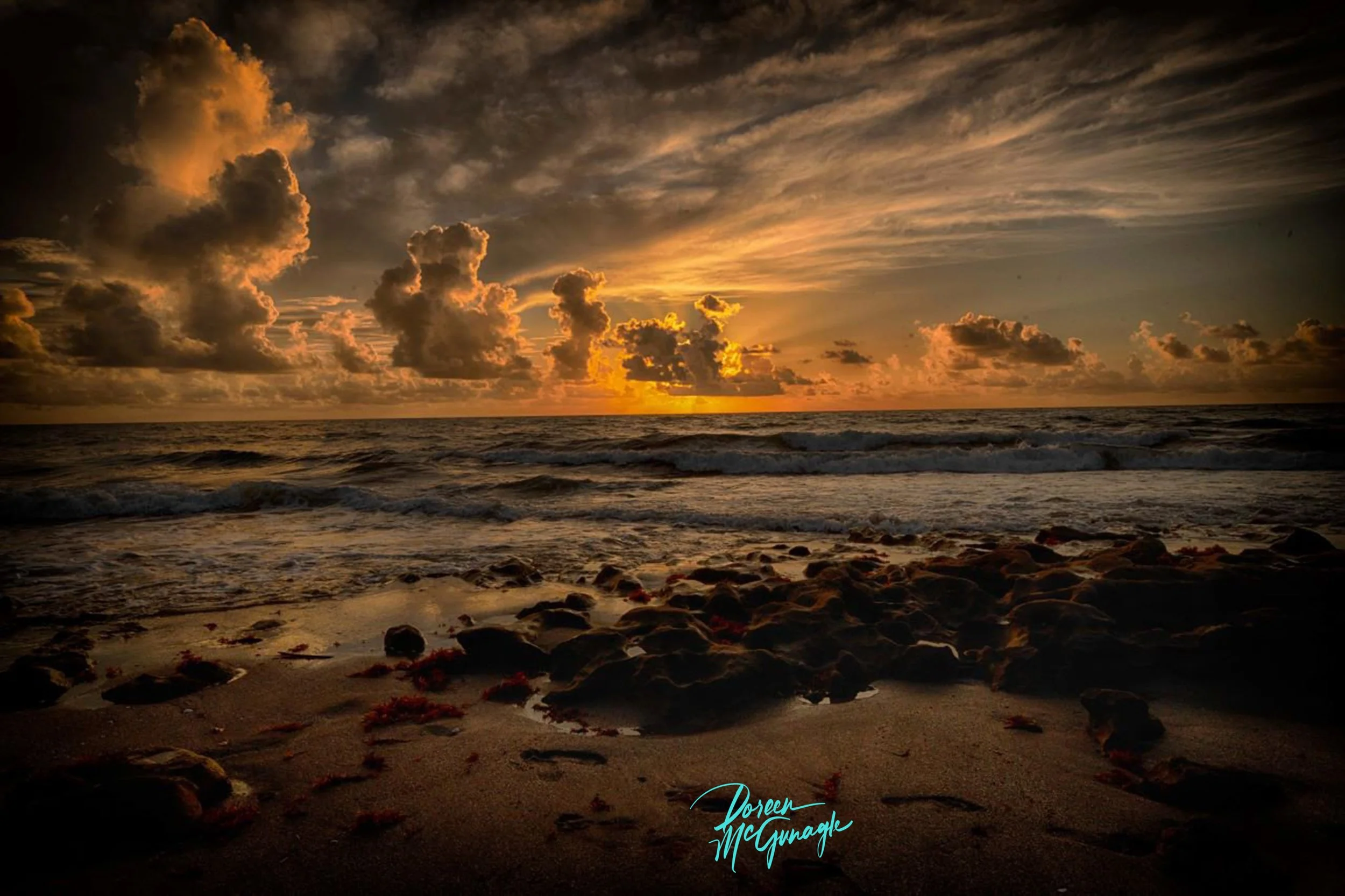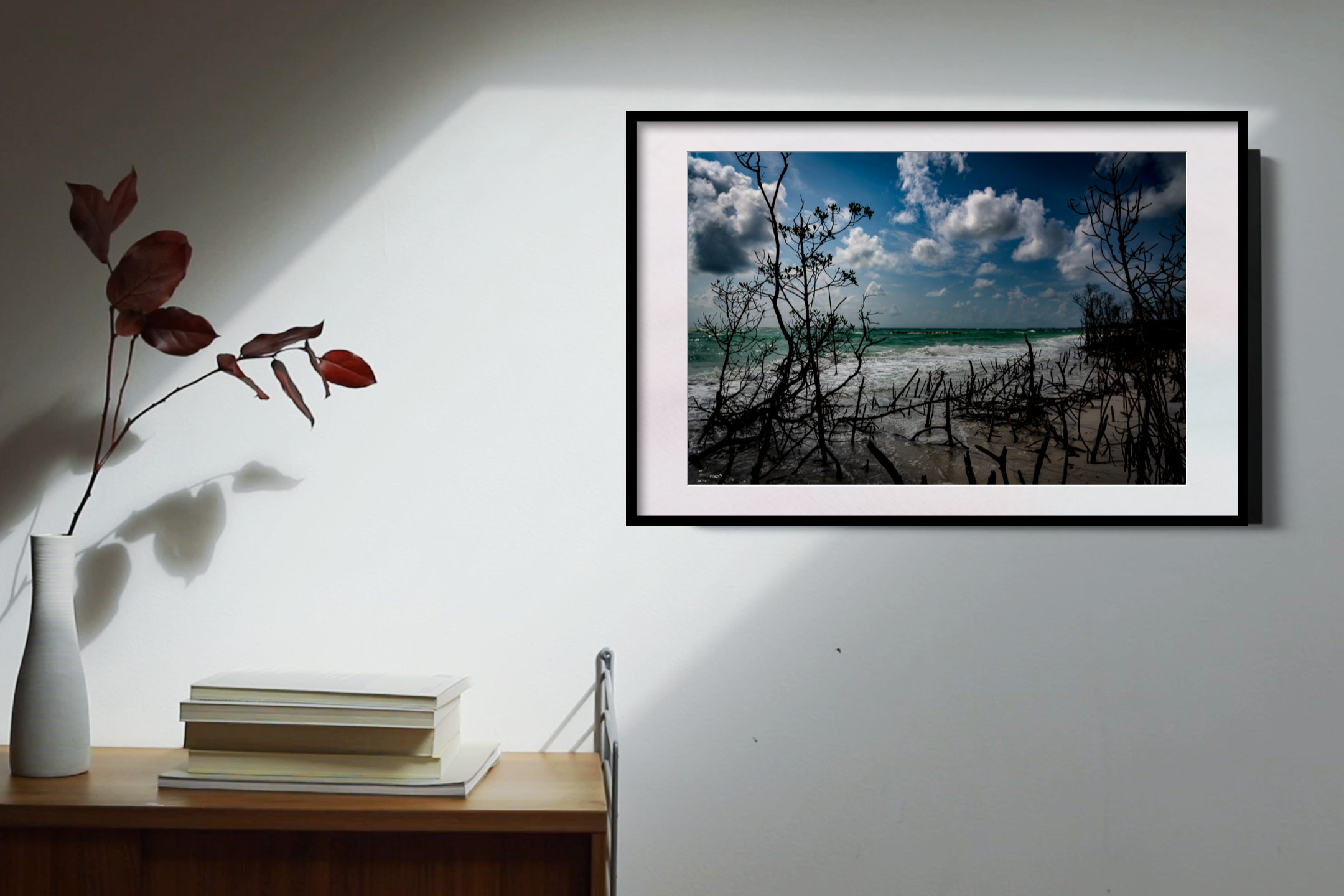Fine Art Coastal Landscape Photography
Fine art coastal landscape photography is a genre that encompasses the beauty of the coast and ocean, capturing the essence of these places in a way that elevates the representation of reality great places to enjoy. It is a genre that seeks to move beyond the simple documentation of the scenery and instead strives to evoke an emotional response and a deeper connection to nature.
The coastal landscape offers a plethora of opportunities for photographers to capture its beauty, from the natural landscapes to the human experience that plays out on the beaches. Fine art coastal landscape photography involves a creative approach to composition, focal point, lighting, and subject matter. It aims to produce images that are both aesthetically pleasing and emotionally engaging, offering a unique perspective on the natural beauty of the coast.
Beach landscapes holds a special place in the hearts of many, offering an escape from the stresses of everyday life. People flock to the coast to enjoy a great time in the sun, sand, and sea, to surf, swim or simply relax. The photographer’s goal is to capture the essence of the coast, to convey the feeling of being there in a way that goes beyond the literal representation of the scene.
Fine art beach photography is a genre of photography that captures the beauty of the beach in a way that elevates it beyond the mere representation of reality in the beach photos. The photographer takes a creative approach to the composition, lighting, and subject matter, with the goal of producing images that are both aesthetically pleasing and emotionally engaging. This type of photography is not limited to capturing the landscape and seascape but includes the people, animals, and objects that make the beach a unique and vibrant place.
The beach is a place that holds a special place in our collective imagination. It is a symbol of freedom, escape, and relaxation. People are drawn to the beach for different reasons, from enjoying the sun, sand, and sea to engaging in activities like swimming, surfing, and beach volleyball. For photographers, the beach provides a rich and varied subject matter, with endless possibilities for capturing the beauty of nature and the human experience.
The beach is a place of natural beauty and tranquility. The sound of the waves crashing on the shore, the smell of the salt air, and the sight of the sun setting over the horizon all make the beach a magical place to photograph.
The beauty of beach landscape photography is that it allows the photographer to capture the changing moods of the beach. A photograph taken at sunrise will have a very different feel than one taken at sunset. The colors of the sky, the water, and the sand will all be different at different times of the day. The beach is also a place of constant change, with the tides, the waves, and the weather all creating a dynamic and ever-changing environment for the photographer to capture.
In fine art beach photography, the photographer seeks to capture the essence of the beach, to convey the feeling of being there in a way that goes beyond the literal representation of the scene. They use various techniques to achieve this, such as playing with color, texture, and contrast to create a sense of depth and mood in the image. They also use creative framing and composition to draw the viewer's eye to specific elements of the scene, highlighting the beauty and uniqueness of the beach.
One of the most important aspects of fine art beach photography is the use of light. The beach is a dynamic environment, with changing light conditions that can have a profound impact on the mood and atmosphere of the scene. The photographer must be skilled in understanding how to use light to their advantage, whether it is capturing the soft, warm light of golden hour, a sunrise or the dramatic, moody light of a stormy sky. They must also be able to work with the challenges presented by the bright, reflective surfaces of the sand and sea, which can make exposure and contrast difficult to manage.
Jekyll Island 08
This breathtaking artwork showcases the remarkable driftwood and trees that adorn the shores of Driftwood Beach, resembling an ethereal scene from another world. The warm, golden hues of the sunrise create a radiant glow that illuminates the surroundings, highlighting the intricate details and unique features of this magical place.
Another important aspect of fine art beach photography is the use of subject matter. While the beach itself is a beautiful subject, the inclusion of people, animals, and objects can add depth and interest to the image. Photographers may choose to focus on the human experience of the beach, capturing moments of joy, relaxation, and connection. They may also choose to photograph the wildlife that inhabits the beach, from seagulls and sandpipers to crabs and starfish. The inclusion of objects such as beach chair, umbrellas, and surfboards can also add visual interest and context to the image to the great locations.
Composition is one of the most important aspects of photography, and this is no different in beach landscape photography. A well-composed photograph can make all the difference in capturing the beauty of the beautiful landscape of the beach during low and high tides. When composing a photograph, it is important to consider the rule of thirds, leading lines, and foreground interest. The rule of thirds is a basic principle of composition that involves dividing the image into thirds both horizontally and vertically, and placing the subject at the intersection of these lines. This creates a more balanced and visually pleasing composition.
Leading lines are another important aspect of composition. These are lines that lead the viewer's eye through the photograph, creating a sense of movement and depth. In beach landscape photography, leading lines can be created by the shoreline, the waves, or even the footprints in the sand from the natural elements on a wonderful location.
Lighting is another crucial aspect of beach landscape photography. Bright sunlight offers its challenges in nature photography. The best times to capture stunning beach photographs are during the golden hours of sunrise and a pastel sunset. The soft, warm light during these times creates a magical and ethereal quality that is perfect for beach landscape photography. The angle of the sun also plays a role in the quality of light, with side lighting creating more depth and texture than front lighting.
Exposure is the term used to describe the amount of light that reaches the camera's sensor. A good exposure is one that accurately captures the scene as the photographer sees it. It is best to use a manual exposure mode to capture that beautiful sunset. In beach landscape photography, exposure can be challenging due to the bright reflections on the water and the sand. To avoid overexposure, it is important to use a polarizing filter, which reduces the glare and reflections and increases the saturation of the colors.
Shutter speed is the amount of time that the camera's shutter remains open. A fast shutter speed is used to freeze motion, while a slow shutter speed creates a sense of motion and blur. In beach landscape photography, a slow shutter speed can be used to capture the movement of the waves, creating a sense of motion and energy in the photograph.
Depth of field refers to the range of distances in the photograph that appear to be in focus. A shallow depth of field is used to create a soft, blurred background, while a deep depth of field creates a sharp, detailed image. In beach landscape photography, a deep depth of field is often used to ensure that both the foreground and the background are in focus, creating a sense of depth and scale in the photograph.
Foreground interest is also an important consideration in beach landscape photography. This can be anything from a rock in the foreground to a person walking along the beach. Including something in the foreground helps to create a sense of depth and scale in the photograph.
In terms of equipment, fine art beach photography requires a camera and lens that are capable of capturing the detail and texture of the scene. A high-quality DSLR or mirrorless camera with a wide-angle lens is a popular choice, as it allows the photographer to capture the expansive nature of the beach. A tripod may also be necessary to keep the camera steady in the often windy conditions of the harsh environment and low light.
Filters are an essential tool in beach landscape photography. They can be used to enhance the colors of the sky and water, reduce glare and reflections, and balance the exposure of the photograph. The most common filters used in beach landscape photography are uv filters, polarizing filters, neutral density filters, and graduated filters.
Polarizing filters are used to reduce the reflections and glare on the water and white sand, while increasing the saturation of the colors. An ND filter is used to reduce the amount of light that enters the camera, allowing for longer exposure and creating a sense of motion in the photograph of sunny days. Graduated filters are used to balance the exposure of the photograph, reducing the brightness of the sky and enhancing the detail of the foreground in a beach environment. Understanding your camera's meter will be critical in creating that awesome image.
Post-processing is another important aspect of fine art beach photography. While the goal is to capture a beautiful image in-camera, post-processing can help to enhance the image and bring out its full potential. Post-processing can be used to enhance the colors of the sky and water, remove unwanted elements from the photograph, and adjust the exposure and contrast of the image. This may include adjusting the exposure and contrast, sharpening the image, and playing with color and tone to create a specific mood. While some photographers prefer to keep their images as close to their original capture as possible, others may choose to use creative editing techniques to produce a more abstract or surreal image. It is important to use post-processing sparingly and to ensure that the final image is a true representation of the scene as it was witnessed by the photographer.
One of the challenges of coastal landscape photography is the constantly changing environment. The weather, tides, and waves can create a dynamic and ever-changing scene, which requires the photographer to be adaptable and quick-thinking. For example, on a cloudy day, the light may be soft and diffuse, allowing for longer exposures and a more muted color palette. On a sunny day, the light may be bright and harsh, requiring the use of filters and careful exposure management.
Tides are an important aspect of beach photography, as they can greatly affect the appearance and mood of the scene. Tides refer to the rise and fall of sea levels caused by the gravitational pull of the moon and sun on the Earth's oceans. The changing tides create a dynamic environment that can provide opportunities for photographers to capture unique and stunning images.
At low tide, the water recedes, revealing the landscape of the ocean floor. This can create a vast expanse of exposed sand, rocks, and other elements that can be incorporated into the composition of a photograph. Low tide also provides the opportunity to capture reflections of the sky and clouds in the pools of water left behind by the receding tide. The exposure of rocks and tide pools can offer textures and lines that can enhance the foreground of an image.
On the other hand, at high tide, the water level covers the beach, creating a more dramatic scene. The waves crashing onto the shore can create a sense of motion and energy in the photograph. High tide also offers the opportunity to capture the power and beauty of waves as they break against the shore. In this scenario, the photographer can experiment with different shutter speeds to capture the motion of the waves, whether it's a frozen moment or a soft, misty effect.
The tide schedule can be a critical factor to consider when planning a beach photography session. It's important to note the times of the high and low tide to ensure the most suitable conditions. The difference between high and low tide can vary greatly and sometimes there are only a few hours in between, making it necessary to plan in advance.
It is worth noting that the tidal range can be much greater during a full or new moon, so it's important to check the lunar calendar before planning a shoot. At these times, the gravitational pull of the moon and sun are aligned, resulting in more extreme high and low tides.
In addition to the changing tides, weather conditions also play an important role in beach photography. The wind direction and strength can affect the movement of waves and can create different textures in the sand. The time of day and the position of the sun can also affect the colors and mood of the scene, with sunrise and sunset providing a warmer and softer light.
Another challenge in coastal landscape photography is the need to respect the environment. The beach is a fragile ecosystem that can be easily damaged by human activity. Photographers must take care to avoid damaging the sand dunes or any sensitive areas of the coast. Additionally, they should avoid disturbing any wildlife and take care not to leave any litter or waste behind.
Fine art beach photography is a genre that is constantly evolving and expanding, as photographers experiment with new techniques and technologies to capture the beauty of the beach scene. In recent years, the use of drones has become increasingly popular, allowing photographers to capture unique aerial perspectives of the beach and its surroundings. Additionally, advancements in digital cameras and post-processing software have made it easier than ever for photographers to create stunning, high-quality images that capture the essence of the beach.
In conclusion, fine art beach photography is a genre of photography that celebrates the beauty and uniqueness of the coast. By using creative techniques in composition, lighting, and subject matter, photographers are able to capture the essence of the coast and convey the feeling of being there in a way that is both aesthetically pleasing and emotionally engaging. Whether it is through the inclusion of people, animals, and objects, or the use of advanced equipment and post-processing techniques, fine art beach photography offers a rich and varied subject matter for photographers to explore and experiment with. As such, it is a genre that will continue to inspire and captivate photographers and art lovers for years to come. Our fine art nature gallery offers fine art wall art that include photographs of the beach. Metal prints offer high contrast look that works well with bold and colorful images, Acrylic prints have a sleek modern mook that adds depth and dimension to the image. Canvas prints offers another aspect to an image that creates a traditional version of an image. Consider the style of the print and the overall look that you want to achieve when choosing the medium for your fine art photographs.



